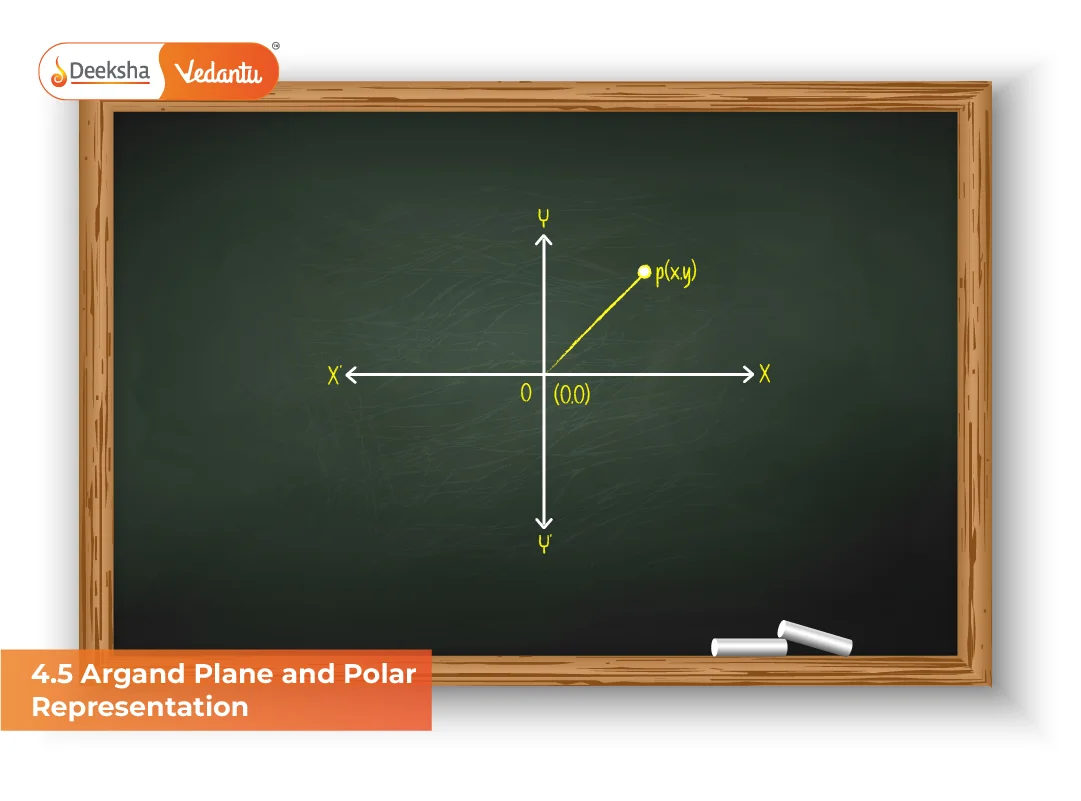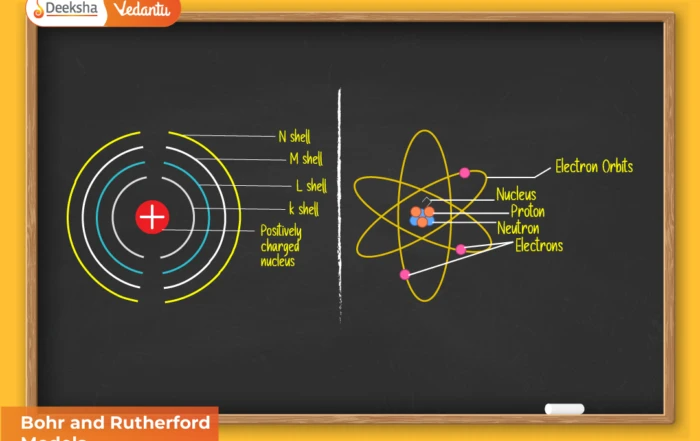
Introduction
Complex numbers are not just algebraic entities; they have a beautiful geometrical interpretation. When we step into the Argand plane and use polar representation, the abstract world of “i” suddenly becomes a visual and calculable space. This transformation is not only aesthetically pleasing but also practically essential in advanced problem-solving.
For students preparing for JEE, KCET, and COMEDK, mastering this topic provides a huge advantage. Many questions – ranging from simple conversions to applications of De Moivre’s theorem and roots of unity – appear in these exams. This makes understanding the Argand plane and polar representation indispensable.
Argand Plane: The Geometric World of Complex Numbers
Representation
- A complex number z = a + ib can be represented as the ordered pair (a, b).
- Plotting this on a plane:
- Horizontal axis = Real axis
- Vertical axis = Imaginary axis
- The plane is called the Argand plane (after Jean-Robert Argand).
Example
z = 3 + 4i → plotted as point (3, 4).
This point can also be visualized as the vector OP, where O is the origin and P is (3, 4).
Modulus and Argument
Modulus (r)
The distance of point (a, b) from the origin:
r = √(a² + b²).
Example: For z = 3 + 4i,
r = √(3² + 4²) = √25 = 5.
Argument (θ)
The angle between the line OP and the positive x-axis:
θ = tan⁻¹(b/a), with quadrant adjustments.
Example: For z = 3 + 4i,
θ = tan⁻¹(4/3) ≈ 53.13°.
Thus, every complex number is uniquely determined by (r, θ).
Polar Representation of Complex Numbers
Any complex number z = a + ib can be expressed as:
z = r (cos θ + i sin θ)
where,
- r = modulus
- θ = argument
This is the polar form of a complex number.
Euler’s Formula and Exponential Form
Leonhard Euler gave the most elegant relation:
e(iθ) = cos θ + i sin θ.
Thus, the polar form can be written compactly as:
z = r e(iθ).
This form is extremely powerful and forms the foundation for De Moivre’s theorem, powers, and roots.
Conversion Between Forms
Rectangular → Polar
- z = a + ib
- r = √(a² + b²), θ = tan⁻¹(b/a)
- z = r (cos θ + i sin θ).
Polar → Rectangular
z = r (cos θ + i sin θ)
= r cos θ + i r sin θ
= a + ib.
Properties of Polar Representation
- Multiplication
z₁ = r₁ e(iθ₁), z₂ = r₂ e(iθ₂)
z₁z₂ = r₁r₂ e(i(θ₁+θ₂))
(Magnitudes multiply, angles add). - Division
z₁/z₂ = (r₁/r₂) e(i(θ₁−θ₂))
(Magnitudes divide, angles subtract). - Powers (De Moivre’s Theorem)
(cos θ + i sin θ)ⁿ = cos(nθ) + i sin(nθ). - Roots
Every complex number has n distinct nth roots:
z(1/n) = r(1/n) [cos((θ + 2kπ)/n) + i sin((θ + 2kπ)/n)], k = 0,1,…,(n−1).
Geometric Interpretation
- Multiplication → rotates and scales vectors.
- Division → shrinks/expands and rotates backward.
- Raising to powers → multiple rotations and stretching.
- Roots → equally spaced points on a circle.
Example: Cube roots of unity
Equation: z³ = 1 → in polar form, 1 = e(i2kπ), k = 0,1,2.
Roots: z = e(i2kπ/3).
These correspond to points on the unit circle at 120° intervals.
Solved Examples
Example 1: Convert to polar form
z = −1 + i√3.
r = √((-1)² + (√3)²) = √(1 + 3) = 2.
θ = tan⁻¹(√3/−1). Since (a = −1, b = √3), the point lies in the 2nd quadrant.
Thus θ = 120° = 2π/3.
So, z = 2 (cos 120° + i sin 120°).
Example 2: Multiplication using polar form
z₁ = 2 e(i30°), z₂ = 3 e(i45°).
z₁z₂ = 6 e(i(30°+45°)) = 6 e(i75°).
Example 3: Find cube roots of unity
We want solutions to z³ = 1.
Polar form of 1: e(i2kπ), k = 0,1,2.
So, roots: z = e(i2kπ/3).
That gives: 1, (−1/2 + i√3/2), (−1/2 − i√3/2).
Example 4 (JEE type): Solve z⁴ = 1
Polar form: 1 = e(i2kπ), k = 0,1,2,3.
Roots: z = e(i2kπ/4).
= e(i0), e(iπ/2), e(iπ), e(i3π/2).
So, z = 1, i, −1, −i.
Applications in JEE, KCET, COMEDK
- Conversion Questions (Boards/JEE Main):
- Write 1 + i√3 in polar form.
- Express cos θ + i sin θ in exponential form.
- De Moivre’s Theorem (JEE Mains/Advanced):
- Expand (cos θ + i sin θ)ⁿ.
- Find exact values like cos(5π/12).
- Roots of Unity (KCET/COMEDK):
- Solve zⁿ = 1.
- Geometric interpretation of nth roots.
Practice Problems
- Convert z = 1 − i√3 into polar form.
- Multiply z₁ = 2(cos 30° + i sin 30°) and z₂ = 3(cos 60° + i sin 60°).
- Find the fourth roots of unity.
- Solve z³ = 8 (in exponential form).
- Prove that the cube roots of unity form the vertices of an equilateral triangle.
Answers (Quick)
- r = 2, θ = −60°. So, z = 2 (cos −60° + i sin −60°).
- Result = 6 (cos 90° + i sin 90°) = 6i.
- Roots: 1, i, −1, −i.
- 8 = 2³ → in polar form: 8 e(i2kπ). Roots: 2 e(i2kπ/3), k = 0,1,2.
- By geometry, arguments are 0°, 120°, 240° → equilateral triangle.
Common Mistakes to Avoid
- Quadrant errors: Always check which quadrant (a, b) lies in before assigning θ.
- Forgetting multiple roots: nth root means n different answers, not just one.
- Skipping Euler’s form: Many exam problems become easier with z = re(iθ).
- Sign mistakes in θ: tan⁻¹ only gives principal values; adjust to correct quadrant.
Summary
- Complex numbers can be plotted in the Argand plane as (a, b).
- Modulus = √(a² + b²), Argument = tan⁻¹(b/a).
- Polar form: z = r (cos θ + i sin θ).
- Euler’s form: z = r e(iθ).
- Multiplication, division, powers, and roots are simplified in polar form.
- Geometric interpretation: rotations and scaling in the plane.
- Essential for De Moivre’s theorem and roots of unity.











Get Social